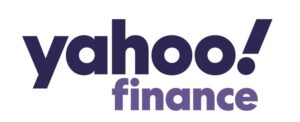 By Betsy Smith
By Betsy Smith
“I forgot my wallet. Can you order my coffee, and I’ll pay you back?”
It’s a simple question coming from a trusted friend. You used to say yes and they would pay you back in cash the next time they saw you/had their wallet.
Now, everything is different. “Yeah, just venmo me.” Now, they can pull out their phone and pay you the exact amount. I get a notification that says, “Thx for the Dunkin–$2.59.”
Everything seems fine and so convenient…but navigating budgeting and spending in the age of Venmo is a little more complicated than it seems. Venmo took an already awkward concept of asking someone to pay you back and made it public—and gave you the option to give them the exact amount.
I really enjoyed reading this New York Times article about how Venmo has made financial transactions into social transactions: read here.
Unfortunately, Venmo etiquette is not discussed as much as social media etiquette or even financial etiquette, but it’s something that is a problem for many young people.
When is it rude to send someone a Venmo request? Should you text the person and ask them to pay you the amount? Do you tell them the exact amount, or do you round to the nearest dollar? Do you make the transaction public or private so other friends don’t feel excluded that you got coffee with one friend?
These seem like simple questions, but I have had countless friends come to me genuinely concerned, asking me for advice about how to not seem rude while using Venmo. The reality is, it is something to think about when asking your friend to pay you back or when paying your friend back.
And Venmo not only has social implications, it also has very, very real budgeting implications. When I got a debit card in high school, my dad sat me and down and gave me a long talk about budgeting.
“Betsy, when you swipe this card, you are spending real money that you earned even if it doesn’t feel like it.” It’s a concept that we are all so used to now, but when we made the switch from cash to debit or credit cards, it felt foreign at first.
Now, I have to remind myself that Venmo is the same way. Yes, it’s as easy and painless as sending a text—but you are still spending real money. Venmo transactions can take a few days to transfer into your bank account, and some people don’t set their Venmo up to a bank account and just use it as a payment system of its own.
This means we must be aware of how much we are spending on Venmo—it really is one more payment method to consider when making sure you are on track for your weekly and monthly budget.
Some tips that I use to be aware of my Venmo spending:
- Keep track of your Vemno profile. You can make sure that you paid people the correct amount and they paid you the correct amount.
- If someone has yet to Venmo you, send them a reminder text or request them, but be nice about it.
- Have a normal “transfer to bank” schedule. Pick a day once a week or month (depending on how much you use Venmo) so that you don’t have a lot of small transactions going back and forth on your debit or credit account.
- Be aware of when you use Venmo—don’t spend more money than you need to just because it is convenient.
Betsy Smith is a junior at the University of Missouri, majoring in journalism.





